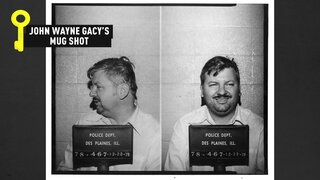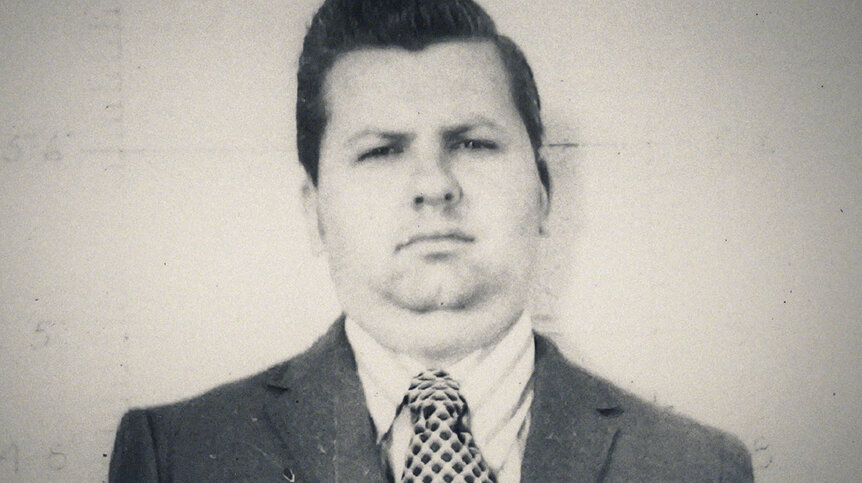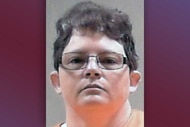Create a free profile to get unlimited access to exclusive videos, breaking news, sweepstakes, and more!
Why Was Robert Piest's Disappearance Treated More Seriously Than John Wayne Gacy's Other Victims?
Many of John Wayne Gacy's victims, like John Szyc and Gregory Godzik, were dismissed as runaways.

While investigators eventually were able to put all the pieces together to discover that serial killer John Wayne Gacy was behind a rash of missing persons cases in the Chicago area, it was only after many of his victims were dismissed as runaways.
Dozens of young men and boys vanished between 1972 and 1978, when Gacy was arrested.
John Butkovich, 18, was one of many teen victims who worked for Gacy’s construction business, PDM Contractors. He vanished in 1975 on his way to collect his final paycheck from Gacy. His remains were later found in the garage of the killer's Des Plaines, Illinois home.
Another employee, 17-year-old Gregory Godzik, vanished in 1976. When initially contacted regarding the disappearance, Gacy simply claimed the boy had run away but his remains were later found among the 29 bodies found buried in a crude mass grave in the crawl space under Gacy’s house, the Chicago Tribune reported in 2018.
It was clear then that Godzik hadn't run away, but that narrative apparently was an easy one for law enforcement to accept at the time of his disappearance. And there were many more like him, as explored in the new docuseries John Wayne Gacy: Devil in Disguise,” available now on Peacock. The project takes a fresh look at the Gacy case, featuring interviews with investigators, prosecutors, and victims' family members, as well as rare footage of a prison interview Gacy gave in 1992, two years before his execution.
John Szyc, 19, vanished in January of 1977 and his family reported him missing. In the docuseries, relatives express their frustration about how he was dismissed as a runaway by police. Investigators even relied on Gacy, who was considered a respectable member of society due to his business and political connections, as well as his charitable work, as a witness; the serial killer told them that Szyc sold him his car to get enough money to leave town. Authorities apparently believed him.
The list goes on: Robert Winch, 18, had moved to Chicago from Michigan after getting in trouble after he ran away from a foster home. He vanished in November of 1977. Then there was Timothy O’Rourke, 20, who vanished in June of 1978, and was known for frequenting gay bars. There was also John Mowery, a 19-year-old Marine whose sister was murdered six years earlier. He vanished in September 1977.
Gacy also targeted actual runaways, sometimes people who were shunned by their own family because they were gay. James Byron Haakenson, 16, ran away from his home in Minnesota in 1976 after feeling like he was unwelcome because of his sexuality, the Huffington Post reported in 2017.
And then there was Jeffrey Rignall, a 26-year-old gay man whom Gacy invited into his car in March 1978, ostensibly to smoke marijuana. He was chloroformed, violently raped and beaten by Gacy, but survived the encounter. After being freed by the killer following the harrowing ordeal, Rignall went to the police, but despite his apparent physical wounds and chloroform burns on his face, authorities didn’t take his account of the attack too seriously, chalking it up to the perils of the gay sex scene, as the docuseries notes.
Dr. Sherry Hamby, a research professor of psychology at the University of the South, told Oxygen.com that some people, even as mere children, are deemed “throwaways” by society. These are people who often come from broken homes and live “on the fringe.” She said they often fall through the cracks and are often not properly investigated if they go off the radar.
“Predators like Gacy are well familiar with this,” Hamby, who also runs ResilienceCon, an annual convention that focuses on preventing and responding to violence, told Oxygen.com. She said that killers like Gacy have learned how to identify people that will likely be ignored more than other potential victims.
Furthermore, she noted that people who are deemed runaways, particularly during the era when Gacy was actively killing, are often blamed for their own circumstances. Police or the public sometimes assume there was something wrong with the missing young person when in reality there was either some abuse going on at home or they didn’t run away at all, she said.
“I think blaming victims or ignoring victims helps us pretend that we are safe,” she said.
It took a missing beloved honors student to really break this investigation open. When Robert Piest, 15, vanished in December 1978, the public concern was high and police were positive he was no runaway.
"We do have these caricatures of what deserving victims look like,” Hamby told Oxygen.com. “Often the ones who come to attention, they are attractive, they are upper middle class, they have other things that signal to people that we should worry about this one.”
Investigators learned Piest disappeared soon after talking to Gacy about a potential job, which sparked a more thorough investigation of the killer, despite his insistence he knew nothing about the teen's whereabouts. It was at that point they realized that Gacy was actually out on parole for sexually abusing a teen boy in Iowa a decade earlier. Ultimately the search to find Piest, whose body had been dumped in the Des Plaines River because there was apparently no more room under Gacy's home, led to the discovery of his many victims, including the ones who had been previously dismissed as runaways.
The case serves as yet another reminder about the dangers of writing off vulnerable groups, but it's hardly the only one. In the 1980s and '90s, Joel Rifkin killed 17 women in New York, many of them sex workers operating on the fringes of society whose disappearances were hardly noticed. (For more on that case, watch the upcoming special, Rifkin on Rifkin: Private Confessions of a Serial Killer, Saturday, April 10 at 7/6c on Oxygen.)
There was Samuel Little, who confessed to killing 93 people, mostly women, between 1970 and 2005. Again, many of his victims lived on the margins and the FBI noted in 2019 that Little "believed he would not be caught because he thought no one was accounting for his victims.”
And the Long Island Serial Killer, an as-yet unidentified killer or killers believed responsible for up to 16 murders in New York in the 1990s and 2000s, mainly targeted sex workers whose fates remained unknown for years until the discovery of numerous bodies along the Long Island shoreline.
Still, Hamby sees at least some progress in victims being recognized by society, noting that researchers "are starting to get better data on vulnerability of people who identify as non binary and transgender as well.”
For example, a 2020 UCLA study showed that LGBT people are nearly four times more likely than non-LGBT people to be victims of violent crime. Hamby said victim-focused narratives can help encourage people to not dismiss possible victims based on lifestyle, gender identity, sexuality, or socioeconomic status.
“I think giving voices to the victims and giving them venues and platforms to speak helps people see their humanity,” Hamby said.
Watch "John Wayne Gacy: Devil in Disguise" now on Peacock. You can also catch the first episode of the six-part series on Oxygen on Sunday, April 18 at 12:30 a.m. ET.


























